Businesses usually show a lot of excitement and energy when they are expanding their operations to the web. When their WordPress or WooCommerce website is being created, they want developers to keep everything on point and develop the best online front among all the competitors. However, this excitement gradually wanes once the website goes online.
As people get more absorbed in their core business again, they start ignoring the website that remains in the same condition for several months or even years. Keep in mind that a WordPress website can’t maintain itself. You need to be proactive to keep your website updated with all the latest plugins and for all the latest cybersecurity threats. There is no way to execute this hands-on approach without having a WordPress maintenance plan in place.
If you are running a business with a WordPress site as its digital front but don’t have any idea on what its maintenance plan entails and why it is important, keep reading this article. We will discuss in detail why WordPress maintenance plan is important. The article will also feature the elements/features of a good WordPress maintenance plan.
Reasons Why WordPress Maintenance Plan Is Important
A WordPress maintenance plan doesn’t just address a single issue. A well-though-out WordPres maintenance plan takes care of your business website at so many levels. Let’s shed light on all those areas where a maintenance plan helps keeps a WordPress site in its most responsive and fail-safe form.
1) Cyber Security
WordPress is not a niche-specific content management system anymore. Statistics suggest that WordPress now powers almost one-third of the entire web. WordPress’s popularity as the most popular platform for self-hosted websites has also made it a favorite target of hackers and cybercriminals.
A report indicates that all versions, plugins, and templates of WordPress have been identified for around 21758 vulnerabilities. One of the biggest reasons for WordPress to show so many vulnerabilities is its open-source back-end codes. However, their teams are vigilant and diligent enough in finding, identifying, and rectifying these security shows through updated patches and plugins.
WordPress itself recommends its users to update their sites to the new version of a template or plugin if their respective updates are launched after the identification of a security issue. These timely updates to WordPress sites are only possible if there is a proactive maintenance plan in place.
People in charge of the maintenance plan keep themselves in the loop regarding all the security patches introduced by developer teams at WordPress and update your site accordingly.
Consequences of Not Taking Care of Cyber Security
Suppose you are running a WordPress site without any maintenance plan. In that case, chances are you will miss all the crucial security patches released in the period between your two distant appraisals of the site. As a result, your business web front will become more vulnerable to cyberattacks.
For e-commerce stores and ventures with a substantial online footprint, any successful cyberattack on their website can result in extended downtime. Your website’s unavailability for even a couple of hours can aggravate into considerable monetary and reputation losses.
2) User Experience
User experience has taken center stage in today’s cutthroat online business environment. A business, irrespective of the quality of its products and services, can’t survive in a competitive digital marketplace if can’t offer a good user experience on its online platforms. Similarly, a newer venture can get a hold of customers of well-established industry players if it boasts a good user experience.
When there are hundreds and thousands of WordPress sites operating in every niche, you need to be at the top of your UX game. This is only possible if you have devised and implemented a care plan for your website. People think that revamping a WP site for its theme and images is enough to provide a good user experience.
However, that’s not the case. The user experience of a WordPress site is not just about the beautification of its pages. A well-crafted maintenance plan improves user experience by focusing on more than just beautification of the site. It takes care of the site speed, broken links, muddled theme, and 404 errors to ensure people can navigate your website without experiencing any glitch.
Improving just side speed involves so many measures (implementing CDN strategy, optimizing images, etc) and can affect UX in various ways. Statistics suggest that more than 50% of users close the tab if a website takes more than three seconds to load. Similarly, broken links on the website create a very bad first impression on users.
Consequences of Bad User Experience
It is pretty to easy to understand how bad UX can pan out for businesses. Let’s suppose a customer opens your website. First, they have to wait for ages (more than three seconds) for the site to get load. Then they have to surf through a template boasting bright colors and poor content silo. On top of that, as soon as they click on the site, they end up on a broken page.
One in ten customers may complain and notify you about their poor user experience. But most users will automatically deflect to your competitor’s website sporting a good user experience. This silent deflection of customers makes bad UX more dangerous because you don’t even know from where your business is getting hurt.
3) Backup
Like any other website, WordPress website is also a combination of data. From nasty cyberattacks to natural calamities, your website can suffer from partial and complete data losses. For instance, a successful ransomware attack on your website can lock you out of your own website and all its data. Similarly, hurricanes and tornadoes, causing long power breakdowns can result in hardware failures followed by permanent or temporary data losses.
All these hardware and software failures can enforce a downtime on a website no matter how well-made and well-secured it is. This is why a well-defined WordPress includes measures that help a business great around these difficult situations without suffering from absolute web blackout (downtime).
Uptime monitoring, timely site backups, and 24/7 security ensure you can operate without incurring any downtime. When a well-laid backup strategy is in place, your website is swiftly restored to its earlier version in the wake of any software or hardware failure.
Consequences of Not Having Site Backup
A WordPress website running without a site backup plan will remain extremely vulnerable to downtimes. Suppose you suffer any hardware or software setback resulting in data loss and downtime, and you don’t have any maintenance experts on board. In that case, your website will become inaccessible to users since there won’t be any guidelines and homework to restore the website to its earlier version.
After suffering from data loss and infrastructure failure, hiring people means you may need several working days to get the website up again and running. In an extremely fragile digital environment, suffering from multiday downtime, especially for a business still trying to get a foothold, can result in irreversible losses.
4) Search Engine Visibility
Today more than 50% of internet users access a website through a search engine instead of typing out its entire URL in the browser. If you have managed to get an eye-catching WP website, that is great. However, your work doesn’t end here. You also need to ensure that your well-made website is visible on Google for relevant search queries. Search Engine Optimization (SEO) helps you get your WordPress ranked higher on Google and other search engines.
But unlike creating a WordPress page, SEO is not a one-time job. It is an ongoing process where you need to constantly tweak and modify various elements on and off the page. This process helps you stay ahead of your competitors for organic search volume. A good maintenance plan also includes SEO measures in various forms.
For instance, maintenance experts will constantly monitor your website rank for a set of most relevant keywords. They will also optimize the website’s content for those keywords and ensure that a substantial link juice (backlinks) supports different pages on the website.
SEO measures also overlap with UX improving activities. For example, good site speed and well-thought-out content silo don’t just improve user experience but also contribute to improving your site’s search engine rank.
Consequences of Having Poor Search Visibility
Let’s suppose your business sells customized cell phone covers in New Jersey. You have managed to get a stunning WordPress site for your business that boasts an attention-grabbing interface and valuable content. But you haven’t laid out any plan for its SEO.
In such a case, your website will only derive traffic from paid campaigns and outbound marketing. On Google Search Engine Page Results (SERPs) for relevant keywords, it will be buried under a plethora of other websites. Keep in mind that the majority of users don’t bother to go beyond the second page of Google while running a keyword search.
5) Opportunity Cost
Last but not least, a WordPress maintenance plan makes for better opportunity cost scenarios. In other words, it turns out more costly to not spend on a well-thought-out maintenance plan. Let’s try to understand that opportunity cost equation of a WordPress with the help of a couple of examples.
For instance, the cost of improving the design of your WordPress site is lower than the cost you incur with customers turning away from your site due to bad design. Similarly, outlay exhausted in fortifying a site against cyber attack will be lower than the ransom amount or recovery expenses you need to spare in the wake of a ransomware attack.
In short, the total cost of devising and implementing a WordPress site maintenance plan is significantly larger than the losses, expenses and missed out opportunities of not having a one.
What Makes a Good WordPress Maintenance Plan?
The above section has outlined pretty much all the things that a WordPress maintenance plan needs to have. However, we are going to give a brief yet categorical overview of a good WordPress maintenance plan.
All-Around Updates
A WordPress site is a function of its source code and themes and plugins. As mentioned earlier, WP developers are very diligent in issuing new core updates.
A good maintenance plan matches frequency with WP’s rate of issuing new updates. Besides updating the website with updates concerning security and its overall performance, a plan will also account for the themes and plugin updates centered on aesthetics and functionality.
In short, a good maintenance plan will keep your WordPress site as updated as the website of a large conglomerate with the most robust web development division.
Security Measures
Cybersecurity is a big issue for WordPress website because they stand on the foundation of open-source codes. A maintenance plan for a WordPress site, therefore, beefs up the security of a website as well. Gone are the days when a weekly review of threats and uptime monitoring would be enough to maintain site security. Today, it has to be maintained 24/7, and this is only possible when there is a special well-thought-out maintenance plan in place.
Website Backup
In many cases, a malware slips through a site’s defense irrespective of how good its web security was. A good WordPress maintenance plan also prepares the website for all such unwanted scenarios where you may have to restore the website to its earlier version to avoid any downtime.
Continuous Performance Optimization
Lastly, a good WordPress maintenance plan involves a dynamic strategy to improve the site for its performance and presentation in every aspect. From improving the site for its loading speed to make sure it is optimized for the right keywords, a good maintenance plan guarantees that your WordPress site ticks every box of quality and performance checklist.
A business can set up a WordPress maintenance plan on its own in light of the above discussion. However, if you already have too much on your plate and fear that you can’t keep up with the plan for long, delegate the task to third-party WordPress management experts.












